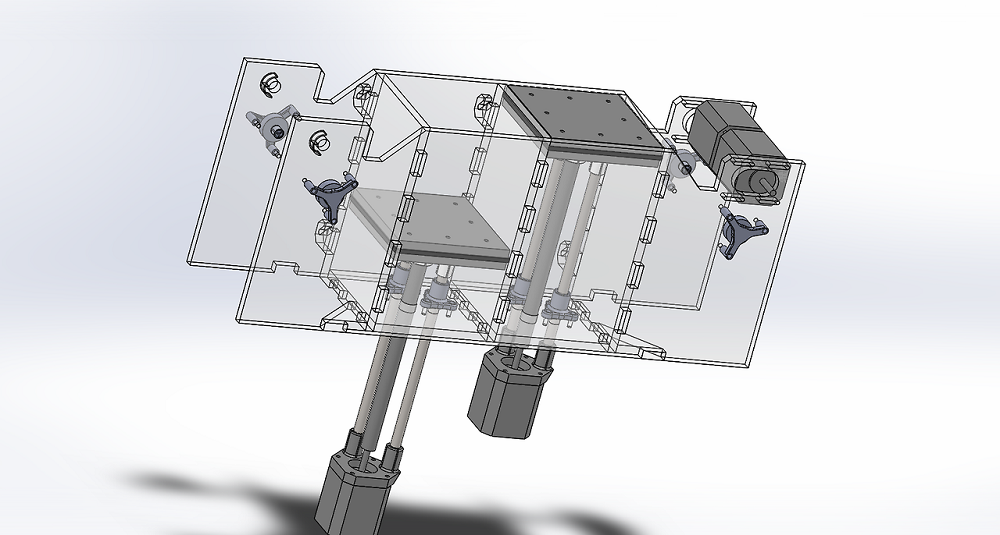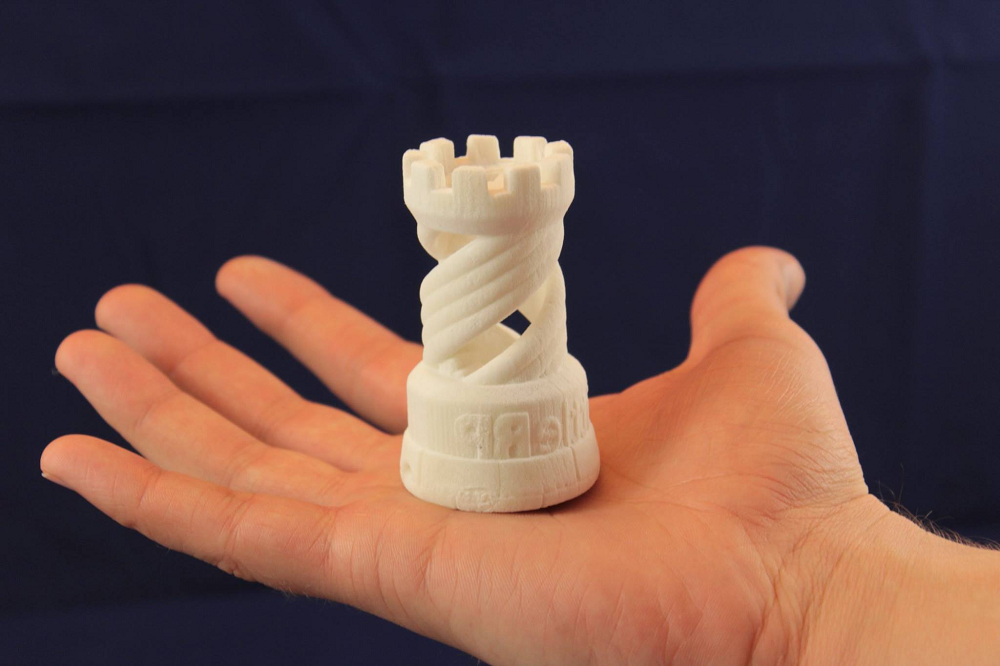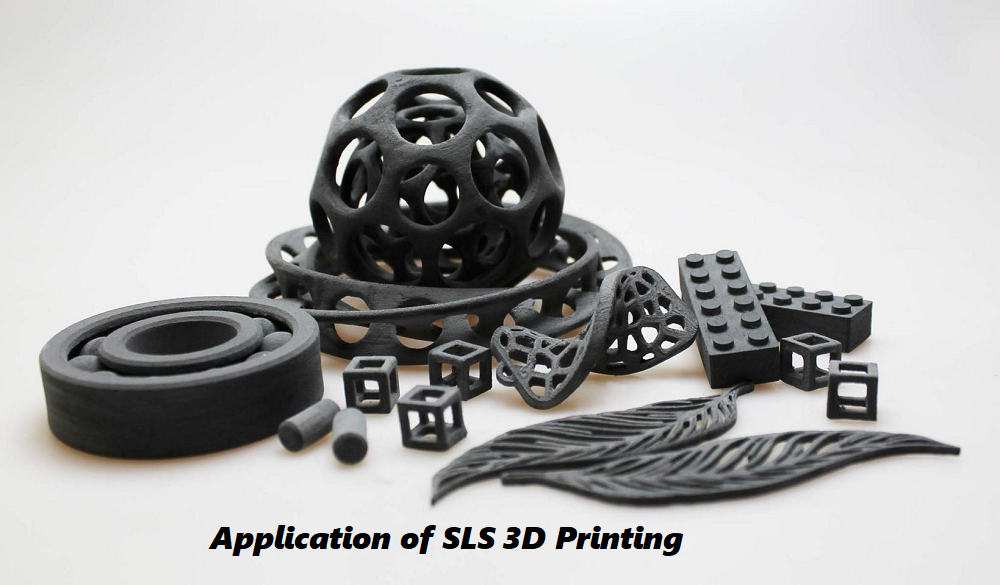Have you ever looked at the thousands of parts used in aerospace design or medical equipment only to wonder how those items are made? The durable medical devices your cousin uses for measuring blood sugar or the aerospace parts that send astronauts into space could result from SLS 3D Printing.
This technology is transforming so many industries. It is reshaping additive manufacturing by producing substantial, functional parts without the need for support structures typical of other 3D printing systems. Instead of using FDM or SLA 3D printing, SLS boosts durability, precision, and scalability, - which is why the aerospace 3D printing industry is expected to grow from $3.89 billion now to $14.55 billion by 2032.
Trust in the process is why so many engineers, designers, and manufacturers worldwide use the technology. Let’s demystify SLS 3D printing and better explain how SLS 3D printing works by looking at the general cost, materials, and advantages of this tech and its real-world applications.
What is SLS 3D Printing?
How is SLS different from other 3D printing methods? The SLS meaning 3D printing stands for Selective Laser Sintering. This powder-based 3D printing technology uses a high-powered laser to fuse tiny particles of selected material. It does this layer by layer until a solid, functional object is printed to your specifications.

You have probably heard of 3D printing, such as extruding melted plastic (used in systems like FDM) or curing liquid resin (SLA). The difference between this and what SLS 3D printing has to do with the powder bed. A laser selectively sinters the material into a solid structure without requiring additional support structures.
SLS technology was first introduced to the world by Dr. Carl Deckard at the University of Texas. From that point, the industry quickly adopted the powerful industrial 3D printing method for all kinds of prototyping and production, from creating a part for a car to designing life-sized models of innovative public housing.
How Does SLS 3D Printing Work?
The process behind what is SLS 3D printing is simple but a little more nuanced than FDM or SLA. The reason for this difference is a lack of support structures. During the SLS 3D printing process, you can expect:
-
A print platform with a thin layer of powdered material like nylon.
-
The 3D printer laser will selectively sinter through the powder (according to the 3D model design used in the software).
-
As the process unfolds, the platform lowers, creating layer upon layer until the object is complete.
-
Any unsintered powder is carefully removed, and the finished product is taken out for finishing.
The beauty is SLS 3D printing does not require support. All the powder naturally acts as a supportive structure for your design of choice, giving the user a bit more flexibility in design – especially with industrial applications.

Materials Used in SLS 3D Printing
Most SLS 3D printing materials are sourced from polymers, with nylon being the most common choice. This is because nylon has a good strength rating, design flexibility, and natural heat resistance. While the specific material you choose varies, some of the more common on the market today include:
-
Nylon (PA12, PA11) – best for functional prototypes and end-use parts.
-
TPU (Thermoplastic Polyurethane) – best for gaskets, seals, and wearables.
-
Composite Materials – anything from glass-filled or carbon-reinforced carbon for additional strength and heat resistance.
Even though design flexibility is a tremendous benefit, SLS 3D printing is mainly limited to polymers. If you’re looking for metal SLS, that would be a different category of technology (like DMLS).
Advantages of SLS 3D Printing
Why choose SLS technology over the numerous other forms of 3D printing available in today’s rapidly evolving marketplace? It all comes down to the many benefits you’ll receive when working with this form factor. For example:
-
You can work with far more complex geometries and intricate designs without relying on support structures that take a long time to break away and sand off from end-printed objects.
-
The nylon polymers help produce challenging, impact-resistant parts widely integrated into functional applications ranging from agricultural pursuits to patient care.
-
Creating multiple parts in a single build (called “Batch Production”) is significantly more straightforward due to the sintered platform function, saving most users time and money.
-
The post-processing of SLS is efficient. You don’t have to wash, cure, and sand SLS parts like you would with SLA or other forms.
Limitations of SLS 3D Printing
Unfortunately, SLS 3D printing does not exist in a technology vacuum. There are some limitations to the technology that are worth noting before you invest in your personal or commercial use. They include:
-
The SLS 3D printing price starts at $1,350 to $1,500. That makes acquiring the machine and parts cost-prohibitive for casual users.
-
Some SLS prints will have a slightly rough texture. It doesn’t need as much sanding as other forms, but it will require a little polishing to finish the part.
These reasons are why you’ll find SLS 3D printing services to be more common in industrial settings than in someone’s garage for a startup business or bedroom for crafting a fun toy for the kids.
Application Areas of SLS 3D Printing
The strong versatility is where SLS shines as a technology. You can find these parts printed for all kinds of extraordinary and groundbreaking applications. Aerospace engineers appreciate SLS due to its lighter weight and high tensile strength. Automotive manufacturers enjoy SLS because it creates realistic and functional prototypes and production parts. Even medical professionals like SLS due to the convenience of printing implants and prosthetics.

Consumer goods also leverage the power of SLS 3D printing services. You can find the technology in everything from wearables that measure heart rate to custom tools and accessories.
Most of the time, SLS 3D printing is utilized for low-volume printing. While it can be used in industrial settings as an affordable solution, the higher consumable cost regulates it more toward the precision part sector than the fun, off-the-cuff niche where you’d print a whistle for a child or phone case holder for your desk.
In addition to the SLS 3d printers we mentioned in this article, we at Creality also have state-of-the-art FDM 3d printers; click through to learn about our K2 Plus!
Comparison of SLS with Other 3D Printing Technologies
As a leading technology, SLS compares exceptionally well to other printing systems like FDM or SLA. The parts in SLS are much stronger than FDM and do not require the support structures. However, the cost to consumers is much higher than that of FDM, so if you’re an at-home creative, you may want to take time to decide which is right for your needs.
As for SLS vs. SLA, you get a similar precision point, but SLS wins in durability. The resin used in SLA can be a little bit brittle. Even though SLA provides higher resolution, it also creates more fragile parts.
If you want a good balance between cost efficiency, durability, and industrial performance, you're best suited to an SLS 3D printer.
| Parameter | Selective Laser Sintering | Fused Deposition Modeling | Selective Laser Melting |
| Abbreviation | SLS | FDM | SLM |
| Material printed | Powdered sinterable polymers (i.e polyamides, TPU, TPE) | Thermoplastic polymer in the form of string (filament) i.e. PLA, ABS | Various metal alloys |
| Operation principle | Laser sintering | Extrusion of melted filament | Laser melting |
| Layer thickness | 0.060 – 0.15 mm | 0.1 – 0.3 mm | 0.02 – 0.1 mm |
Final Thoughts
What is SLS 3D printing offers a wealth of opportunities for precision and durable parts. Using Selective Laser Sintering 3d printing, the technology allows powered materials like high-strength nylon to be formed layer over layer without structural supports. The result is a fantastic new part for various commercial and industrial applications.
If you’re interested in learning more about what SLS stands for in 3D printing applications or want to try the printing process for your next project, be sure to research SLS printers or contact our team at Creality. We can point you in the right direction, including offering comparisons and advantages of our latest printer selection.
3D printing of any kind is evolving at breakneck speed. Get on board the wave of the future and check out all Creality has to offer now.
If you have used SLS 3D printing in the past and want to discuss how its technology compares to other popular methods, be sure to leave us a comment below!
